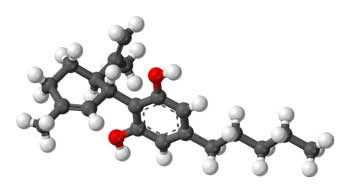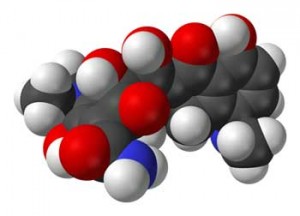

The microglia surround and protect the neurons in our brains and spinal cord. As the main immune defenders in the brain, they spew out an array of inflammatory and neurotoxic substances when activated. When we have a cold these substances cause the symptoms associated with ‘sickness behavior’ such as fatigue, pain, and mental fogginess.

It’s all speculation at this point, but cellular stress factors called alarmins could be tweaking hypersensitive microglia in FM and ME/CFS
Some researchers speculate that stress, infections, repeated insults and/or genetic factors can prime the microglia to over-respond to substances called alarmins generated by cellular stress. They believe that this microglial hypersensitivity is causing neuroinflammation in many diseases.
A small 2014 study using a PET scan to measure microglial activation suggested the microglia were indeed activated in large parts of the brains of people with ME/CFS. Dr. Jarred Younger’s small study at Stanford suggests microglial sensitization to leptin could be causing the fatigue in ME/CFS. He believes low dose naltrexone’s (LDN’s) success in small Fibromyalgia trials derives from LDN’s ability to reduce microglial activation.
- See Neuroinflammation: Putting the ‘itis’ Back in to Myalgic Encephalomyelitis – Back to the Future for Chronic Fatigue Syndrome?
While microglial activation clearly plays a role in neuropathic pain, direct evidence of microglial activation in ME/CFS or FM is still scanty. The potential microglial inhibitors listed below are not intended as a treatment prescription for ME/CFS or FM, but to illustrate treatment possibilities that future research may indicate are helpful.
The drugs in the list below have microglial inhibiting factors. Although no specific microglial inhibiting drugs are known, some drugs that selectively suppress microglial activation are under development. The list is mostly taken from Jarred Younger’s presentation at the Stanford Symposium for Chronic Fatigue Syndrome – March, 2014.

No drugs have been developed to specifically inhibit the microglia, but a range of drugs appear to have microglial inhibiting factors
Possible Microglial Regulating Drugs
Low Dose Naltrexone (LDN)
LDN’s microglial inhibiting properties have not received a great deal of study. Studies suggest, though, that LDN is able to suppress microglia activation by suppressing receptors (TLR4) which play key role in the production of nerve pain. (Interestingly these same receptors may be responsible for opioid induced pain sensitivity and reduced opioid effectiveness).
A 2010 study found evidence of reduced microglial activation in morphine addicted rats. Dextro-naltrexone is a form of LDN which does not block opioid receptors. It’s ability to reduce neuropathic pain suggests LDN’s positive effects in Fibromyalgia are probably due to its microglial blocking characteristics.
Medical Marijuana and Cannabidiol

Cannabidiol makes up about forty percent of the marijuana plants extract. It, not THC, is probably responsible for marijuana’s immune modulating effects
Dr. Younger did not include medical marijuana in his list of microglial inhibitors, but it’s clear that a marijuana derivative called cannabidiol has strong microglial inhibiting factors. Cannabidiol (CBD) – which does not have psychoactive affects – reduced inflammation and microglial activation in two viral models of multiple sclerosis and in a laboratory study. CBD also inhibited microglial density and the creation of a neuropathic pain state in a diabetic mouse model. CBD is a much more effective immune regulator than the psychoactive tetrahydrocannabinol (THC). Chronic THC exposure has been linked, in fact, to microglial activation in a mouse model.
Antibiotics
“There is no other compound available that is safer and displays specificity better than Minocycline in inhibiting microglial activation. Thus, the potential therapeutic benefits of this inexpensive, well tolerated, already FDA-approved drug that has minimal side effects would be enormous”
-
Minocycline – an antibiotic, minocycline’s microglial inhibiting properties have probably received the most research of any of these drugs. In combination with tramadol, minocycline was effective in reducing neuropathic pain and IL-1B activity in a rodent model. A current minocycline trial for treatment resistant hypertension is attempting to reduce sympathetic nervous system activation and enhance parasympathetic nervous system activity. A similar pattern of SNS/PNS activity is found in ME/CFS and FM patients. Check out Drug Repurposing I: Antibiotics to Reduce Microglial Activation in ME/CFS and Fibromyalgia?
- Rifampin – a bactericidal antibiotic, Rifampin inhibited a variety of inflammatory mediators from microglia including TNF-a, IL-1B, nitric oxide, and prostaglandin E2 in a laboratory study. Few other studies have been done.
- Ceftriaxone – another antibiotic, Ceftriaxone has been shown to reduce neuronal hyperexcitability, regulate glutamate transport in the prefrontal cortex, reduce ischemic brain injury and reduce neuropathic pain in rodents.
Others
- Dextromethorphan – Mostly used as the active ingredient in cough-suppressant formulations, dextromethorphan has also shown in animal models to protect neurons from glutamate excitotoxicity, hypoxia, and ischemia, and inhibits microglial activation. As with LDN, low doses were more effective and higher doses were not effective in reducing neuroinflammation in one study using a mouse model. Five to ten studies have examined dextromethorphan’s effects on central nervous system activation. Check out the results of a small fibromyalgia dextromethorphan study.
- Propentofylline – many studies have assessed the effects of propentofylline, a xanthine derivative, which is also being examined for its effectiveness in Alzheimer’s and ischemic stroke. A recent study found propentofylline blocked allodynia in a mouse model
- Glatiramer acetate – Glatiramer acetate (aka Copaxone) is an immunomodulatory drug which has been shown to reduce microglial cell activation in M.S., modulates TNF-1 and IL-10 expression in microglial cells, and is believed to have other neuroprotective properties.
- Ibidulast – the fact that ALL Ibidulast studies (except one) in the Clinicaltrials.gov database are recruiting (i.e., none have been completed yet) indicates how new the drug is to the Western medical establishment. Of the nine studies underway, two focus on multiple sclerosis and one on the microglial inhibition in migraine.
- Ganciclovir – of which valcyte is a prodrug – is a potent microglia inhibitor.
- Palmitoylethanolamide (PEA) – is a medical food which goes under the name of Normast. It was not mentioned by Dr. Younger. Check out “Palmitoylethanolamide (PEA) – A Medical Food for Fibromyalgia and (ME/CFS)”
Drugs Under Development
- 3-hydroxmorphinan – prodrug is in clinical trials for Parkinson’s disease
- Dilmapimod – called a ‘cytokine-suppressive anti-inflammatory drug, Dilmapimod is being trialed for its effectiveness in treating neuropathic pain in several disorder.
- ATL313
- BAY 60-6583 – an adenosine receptor agonist, BAY 60-6583 protests against damage due to low blood levels.
- FP-1
- Resolvin D-1
- Resolvin E-1
Nutrients and Supplements (from Younger’s presentation)
Luteolin, panax ginseng, tumeric, resveratrol, gastodia elata, obovatol, inflexin, piper gadsura, ganogerma lucidum, berberine, epimedium brevicornum, isodon japonicas, stephania tetrandra, stinging nettle, fisetin, pyncogenol, boswellia, kratom.








Stinging nettle helps? Quick, tell me what to do with it before I pull it all out of the garden for the next year.
🙂
Lucky you to have some! It makes a delicious cooked vegetable or you could dry and shred it to keep, to make nourishing infusions. You can learn how to deal with it by looking up the herbalist teacher, Susan Weed, on youtube and typing in Stinging Nettle next to her name.
Also Palmithoyletanolamide has been studied for his ability to inhibit microglia.
Yes, indeed. I just found out about that this morning. A very interesting ‘medicinal food’ – a blog is upcoming on that. Thanks for mentioning it.
”
Well Cort, when I read the japanese study about neuro inflammation I searched for a drug which were safe and I found this kind of supplement.
I’ve been using it for a month and an half with some positive result.
Thanks. Good searching! I just stumbled upon it in a discussion…Good luck with it.
Hi Cort,
I got excited when you and Paolo mentioned a supplement which might help the pain of fibro, but neither of you mentioned its name! Was it stinging nettle? BTW, it’s appropriately named. I once tried to uproot one in my garden and it took quite a while before the stinging stopped.
I had minor heart surgery in March and ever since then I’ve been experiencing a higher level of pain than ever before. Life… One problem is solved and another appears!
Any further info would be much appreciated.
It’s called Palmitoylethanolamide – a medical food – and it goes under the name of Normast. I’m not sure how difficult it is to get.
Yes, Ebay has Normast.
About PEA and glia cell activation
http://www.thblack.com/links/RSD/OpenPainJ2012_5_12_RoledOfPEAinPainControl-11p.pdf
PEAPURE is better than Normast as it does not have the sorbitol and magnesiumsterate that Normast has.
Just made my first order; here in Belgium it is easy to buy, I get it from the Netherlands.
Hi Paolo
Any idea where one might source palmithoyletanolamide ?
If anyone knows please share. I’m going to check into it for the upcoming blog.
In Italy Palmitoylethanolamide is sold as Normast, but you can buy it on-line from this site:
http://www.peavera.com
I’ve read some studies about this molecule and I think you should take about 30 mg for kg of weight.
You can also buy it on Ebay 🙂
Very interesting article Cort.
There was a recent thread about the significant benefits of ceftriaxone (Rocephin) for ME/CFS here: http://forums.phoenixrising.me/index.php?threads/rocephin-shots.29701/
One participant on the thread said:
“After my first shot [of Rocephin] I felt horrible for the first day or two after but then I FELT ALMOST TOTALLY WELL.” (Rocephin dose: injections of 1 gram, twice a week).
Another said:
“I have been severely ill for over 20 years and just tried a few weeks of IV Rocephin. My fog has been unbearably horrible throughout my illness, and the ROCEPHIN ALMOST MADE MY BRAIN NORMAL AGAIN.” (Rocephin dose: injections of 2 grams 4 times a week).
Wow – how interesting! Thanks for the link. I wonder how they came about getting it…I guess I’ll have to go onto the Forums..(darn)
And then there is guaifenesin, Dr Mackay from Stanford felt that may be why it works for some as it affects the micro glial cells. He felt that LDN would work better. He has a video on this.
Great article, thanks you. It lead me to look at foods…cheaper and more accessible.
http://pilladvised.com/2011/06/anti-inflammatory-foods-reduce-memory-loss/
http://www.naturalhealth365.com/tag/foods-high-in-luteolin
Off to search out luteolin supps!
Umm…on a bit more searching it seems it might be prudent to stick with the food route.
Tomatoes?
Lycopene Inhibits Cyclooxygenase-2 And Inflammatory Mediator Expression In Microglia
“Lycopene, one of the major carotenoids present in tomatoes, shown to exert antioxidant properties and inhibition of cancer cell proliferation. However, the effect of lycopene on neuroinflammatory responses in microglia still remains unknown.”
“Our results also indicate that lycopene is a promising nature product and may be as a useful pharmacological agent for the treatment of neuroinflammation-associated disorders.”
http://www.fasebj.org/cgi/content/meeting_abstract/27/1_MeetingAbstracts/1168.3
Thanks. That’s an easy and pleasant option.
Hi Cort
Nice to see this topic getting another airing.
I hadn’t realised that Younger had explicitly linked leptin fluctuations to microglial activation as an ‘alarmin’ – as far as I know leptin hasn’t been identified as such to date although scientific knowldege of alarmins appears to be in its infancy. I can’t help feeling that once CNS glia have been primed that anything that disturbs homeostasis has the potential to cause microglial activation.
Interestingly, in the context of exercise intolerance/PEM and the Lights’ findings, microglia express receptors for (and are activated by) exercise related metabolites/channels activated by exercise including adrenergic, purinergic, acid sensing and vanilloid.
http://www.researchgate.net/publication/51081930_-Adrenergic_receptor_antagonism_prevents_anxiety-like_behavior_and_microglial_reactivity_induced_by_repeated_social_defeat
http://www.ncbi.nlm.nih.gov/pubmed/22944319
http://www.ncbi.nlm.nih.gov/pubmed/22674620
http://www.ncbi.nlm.nih.gov/pubmed/1845221
http://www.ajnd.us/files/AJND1204002.pdf
Which suggests that we can add propronalol as an (indirect) microglial inhibitor plus my old friend NAC may act synergisically with minocycline :
http://www.jove.com/visualize/abstract/24036416/minocycline-plus-n-acetylcysteine-synergize-to-modulate-inflammation
While we may not like the implications, we do tend to react badly to stress and this recent rodent model (of ME/CFS) suggests that chronic stress can activated microglia resulting in allodynia/myalgia :
http://onlinelibrary.wiley.com/doi/10.1002/glia.22687/abstract
That’s enough from me : )
I don’t think Younger connected ME/CFS to alarmins and I adjusted that sentence accordingly. It nagged at me when I wrote it.
Look at that ME/CFS rodent model – published in the Glia journal 🙂 Pain but no signs of inflammation! Activated microglia in the spinal column can cause pain without inflammation in the muscles. They were activated by stress…
Moreover, no signs of inflammation and injury incidents were observed in both the plantar skin and leg muscles. However, microglial accumulation and activation were observed in L4–L6 dorsal horn of CS rats.
These results indicated that activated microglia were involved in the development of abnormal pain in CS animals, suggesting that the pain observed in CFS and FMS patients may be partly caused by a mechanism in which microglial activation is involved. GLIA 2014
Thanks for all the links 🙂
Thanks for the clarification re Younger Cort.
Just thought I’d highlight something from the first link I posted regarding the response of microglia to subsequent immune challenge in mice ‘primed’ by social stress :
“Microglia isolated from socially defeated mice and cultured ex vivo produced markedly higher levels of IL-6, tumor necrosis factor-α, and monocyte chemoattractant protein-1 after stimulation with lipopolysaccharide compared with microglia from control mice.”
Interesting?
Yes, just red that one I think. Microglia released very quickly from bone marrow…I think. Tired now. I was wondering about the instant stress response.
Stress still affects my brain badly.
On Minocycline (plus NAC, resveratrol etc) i get about four hours of exertion out of my brain during a painting session. But then it still poops out and takes me days to recover.
Much better than before, but still very disappointing. Would love to know exactly what is going on.
Glad to see this gaining traction. Some time ago, I stumbled upon how much opioid analgesics diminish my symptoms significantly. As discussed in a thread in the forums, this is not a masking of the symptoms with a high from these drugs…..they actually reduce my symptoms greatly, and allow for pushing the stress limits much more. Tramadol will do do this a little, but nothing like say, hydrocodone. I’ve been networking attempting to find an alternative to narcotics that will do the same…..but have found nothing yet. I have not heard any of our docs or researchers discussing this, and they should because the effect is quite profound….and I’m not the only one. This response has very significant meaning and should be pursued.
I don’t know about LDN. I was first given it 15 years ago, and it made me more ill. I had the same happen when I tried it again 6 years ago. Seems odd that LDN makes me more ill, yet opioids are helpful. Maybe I would do better on it now.
I do get some relief from codeine phosphate and still avoiding courses of pharma drugs apart from resent thyroid hormone. Valerian passion flower st. John’s wort, 5htp helped hugely along with sugar control. Those I took as a course for around six weeks and staunched a year of accelerating depression and uncharacteristic anger or crying bouts…anywhere, any place, any time.
I exercise every day, I think because I must get some relief from the endorphins. It’s only temporary, of course, and too much clobbers me after a delay, but I find it interesting that endorphins calm the microglia.
Microglia is not the main cause of ME. It is much more complicated. I wish it was as ‘simple’ as micorglia.
It’s a horrible chicken-and-egg-shaggy-dog-tale but any strategy to calm things down along the way gratefully received.
This is great, thanks Cort: http://www.cortjohnson.org/blog/2014/05/17/limbic-kindling-hard-wiring-brain-hypersensitives-chronic-fatigue-syndrome/
I’ve just found that another drug which has anti inflammatory effect by inhibiting microglia, is memantine. It’s used for Alzheimer’s disease and is relativly safe. This is the 2009 study:
http://www.ncbi.nlm.nih.gov/pubmed/19536110